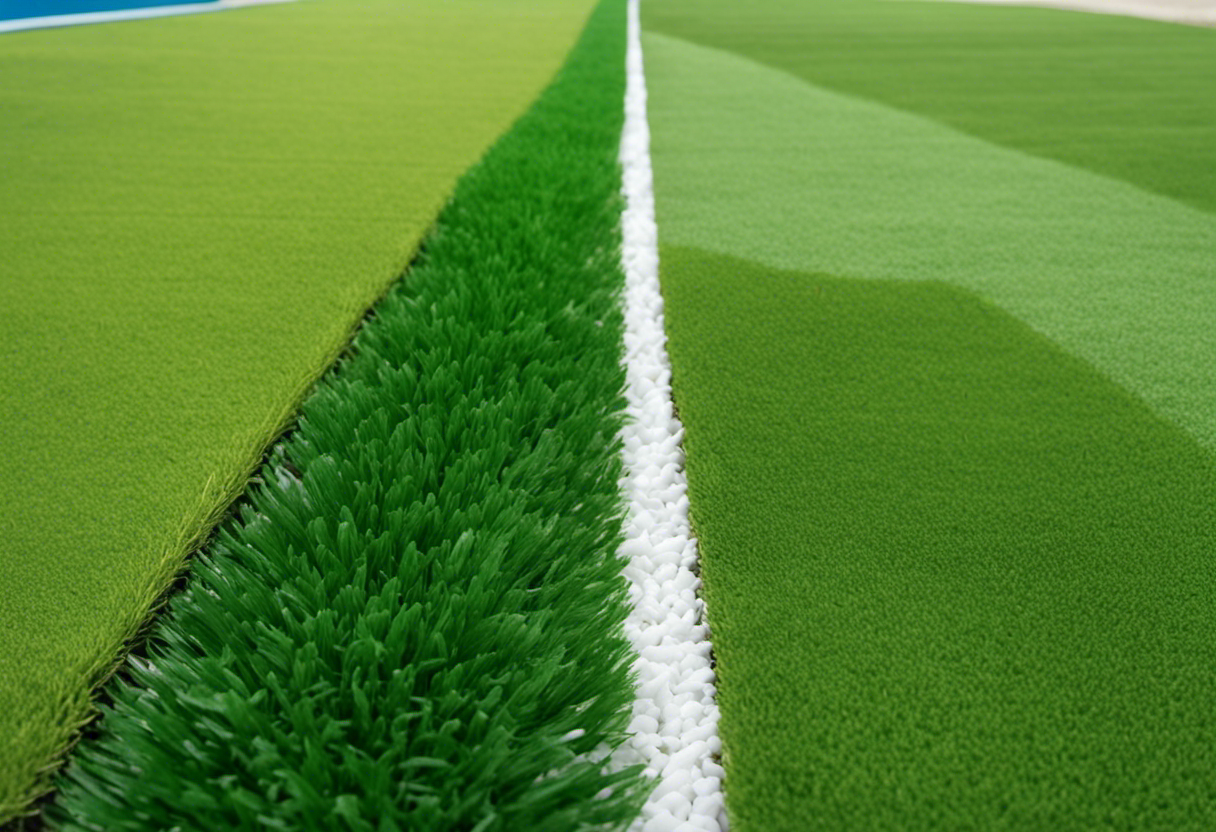Unveiling the Advantages and Disadvantages of Artificial Turf: A Comprehensive Exploration

The use of artificial turf has become increasingly popular in both residential and commercial settings, with many homeowners and organizations opting for this alternative to natural grass. Artificial turf offers numerous benefits, but it also comes with a set of drawbacks that need to be taken into consideration. In this comprehensive exploration, we delve into the advantages and disadvantages of artificial turf, providing valuable insights to help you make an informed decision.
Advantages of Artificial Turf
1. Low Maintenance Requirements: One of the primary advantages of artificial turf is its low maintenance needs. Unlike natural grass, which requires regular mowing, watering, and fertilizing, artificial turf necessitates minimal upkeep. This is especially beneficial for those who have busy lifestyles or for businesses looking to reduce maintenance costs.
2. Consistent Appearance: Another benefit of artificial turf is its ability to maintain a uniform and appealing appearance throughout the year. It remains green and lush, regardless of weather conditions or heavy usage. This makes it particularly suitable for areas with high foot traffic or regions prone to droughts.
3. Durability: Artificial turf is designed to withstand heavy use and resist wear and tear. It is highly durable, capable of withstanding intense sporting activities, children playing, and even pets. This durability makes it a popular choice for sports fields, playgrounds, and commercial spaces.
4. Water Conservation: With increasing concerns over water scarcity, artificial turf offers a significant advantage of conserving water. The elimination of the need for regular watering not only reduces water bills but also lessens the strain on local water supplies. This makes it an appealing option for regions with limited water resources or where water restrictions are in place.
5. Allergy-Free Environment: For individuals with grass allergies, artificial turf can create an allergy-free environment. Unlike natural grass, which can trigger allergies and hay fever symptoms, artificial turf does not produce pollen or other allergens. This allows people with allergies to enjoy outdoor spaces without the discomfort associated with traditional grass.
Disadvantages of Artificial Turf
1. High Initial Cost: One of the main drawbacks of artificial turf is its relatively high upfront cost compared to natural grass. The installation expenses, including the turf itself, infill materials, and professional labor, can be substantial. However, it is important to consider the long-term cost savings in terms of maintenance and water bills.
2. Heat Absorption: Artificial turf has the tendency to absorb and retain heat, especially in hot climates or areas with direct sunlight exposure. This can create uncomfortable conditions for users, including pets and children who may be at risk of burns or discomfort. Some manufacturers have developed technologies to address this issue, such as incorporating cooling infill materials or installing artificial turf with heat-deflecting properties.
3. Limited Lifespan: While artificial turf is durable, it does have a limited lifespan compared to natural grass. Over time, the fibers can become worn and flattened due to heavy use, which may require replacements or repairs. However, advancements in manufacturing techniques have increased the longevity of artificial turf, mitigating this concern to some extent.
4. Environmental Impact: Despite its water-saving benefits, artificial turf is not without potential environmental concerns. The production and disposal of artificial turf involve the use of non-renewable resources and chemicals. Additionally, the lack of natural soil and vegetation can impact local ecosystems, reducing biodiversity and inhibiting natural drainage.
5. Infill Controversy: Artificial turf requires infill materials, such as rubber or sand, to provide stability and cushioning. The use of rubber infill, made from recycled tires, has sparked controversy due to potential health and environmental risks. While studies have shown minimal health risks, some individuals remain concerned. Sand infill is an alternative, but it may require periodic replenishment.
Artificial turf offers a range of advantages, including low maintenance requirements, consistent appearance, durability, water conservation, and an allergy-free environment. However, it also comes with its share of disadvantages, such as high initial cost, heat absorption, limited lifespan, potential environmental impact, and the controversy surrounding infill materials.
Ultimately, the decision to opt for artificial turf should be based on individual needs and preferences. Consider factors such as budget, climate, usage, and environmental concerns when making a choice. Furthermore, it is advisable to consult with professionals and review product specifications to ensure the highest quality and safety standards.
By thoroughly exploring the advantages and disadvantages of artificial turf, you can make an informed decision that aligns with your specific requirements, ultimately creating a landscape that meets your goals and enhances your outdoor space.